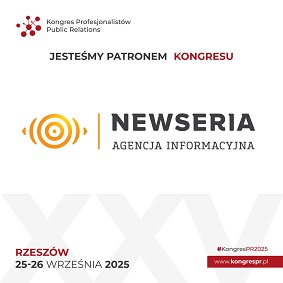Optical Lenses Market size is expected to Reach USD 27.4 Billion by 2032
Optical Lenses Market Research Report Information By Type, Application and Verticals
AZ, UNITED STATES, April 14, 2025 /EINPresswire.com/ -- Market OverviewThe global optical lenses market is poised for significant expansion, with projections indicating a Compound Annual Growth Rate (CAGR) of 7.33% through 2032. By the end of the forecast period, the market is expected to surpass USD 27.4 billion, driven by increasing demand for corrective lenses, growing prevalence of visual impairments, and a rising inclination toward weekly disposable contact lenses. This upward trajectory is especially evident in developing and emerging economies, where vision-related disorders are becoming increasingly common.
Competitive Landscape
Kery players in the market include
• Nikon Corporation
• Schott-
• Olympus Corporation of America
• Bausch +Lomb
• Menicon Co. Ltd
• Cosina Ltd
• Carl Zeiss Ag
• Cyberoptics Corporation
• Meade Instruments
Download Sample Pages: https://www.marketresearchfuture.com/sample_request/4443
Key Market Drivers
1. Surge in Visual Dysfunction Globally
The market growth is heavily influenced by the rising global burden of visual disorders, including myopia, hyperopia, astigmatism, presbyopia, and cataracts. As populations age and screen time increases across all age groups, the incidence of eye-related ailments is escalating at an alarming rate. These conditions are no longer confined to the elderly—youth and working professionals are increasingly seeking vision correction solutions, fueling demand across regions.
2. Rising Popularity of Weekly Disposable Contact Lenses
Among the fastest-growing segments within the optical lenses market is weekly disposable contact lenses. These lenses offer a balance between convenience and hygiene, with reduced risks of infections compared to extended wear options. The demand for these lenses is surging, especially among active consumers who prioritize both vision correction and lifestyle flexibility. Their increasing availability across online and retail channels has made them accessible to a broader consumer base.
3. Expanding Access in Developing Economies
In emerging and developing nations, improved access to vision care and growing awareness about eye health are contributing significantly to market expansion. Governments and healthcare providers are investing in outreach and screening programs, making vision correction more accessible and affordable. At the same time, rising disposable incomes are enabling more individuals to invest in higher-quality eyewear and contact lenses.
4. Technological Advancements and Product Innovation
Lens manufacturers are continuously focusing on product enhancements to cater to evolving consumer needs. Innovations in lens materials, such as silicone hydrogel, and coatings that block blue light or UV rays are gaining popularity. These advances not only offer superior comfort but also provide added health benefits, enhancing their appeal among tech-savvy users.
The push for sustainable lens manufacturing is also gaining momentum. Companies are now developing eco-friendly packaging and lenses that have longer wear durations with minimal side effects, aligning with global sustainability goals and increasing consumer consciousness about environmental impact.
5. Low-Cost Eyeglasses and Affordability of Vision Correction
The affordability factor continues to play a critical role in expanding the optical lenses market. Low-cost eyeglasses and budget-friendly contact lenses are reaching underserved populations, especially in rural areas. These economical options are helping to reduce the unmet need for vision correction, making quality eye care more inclusive.
Browse In-depth Market Research Report: https://www.marketresearchfuture.com/reports/optical-lenses-market-4443
Market Segmentation
The optical lenses market can be broadly segmented into:
By Type:
o Contact Lenses (Daily, Weekly, Monthly)
o Spectacle Lenses
o Intraocular Lenses
By Material:
o Glass
o Plastic (CR-39, Polycarbonate, Trivex)
o Silicone Hydrogel
By Application:
o Myopia
o Hyperopia
o Astigmatism
o Presbyopia
o Post-Cataract Vision Correction
By End-User:
o Retail Consumers
o Hospitals and Clinics
o Optical Stores and Chains
o Online Retail
Procure Complete Research Report Now: https://www.marketresearchfuture.com/checkout?currency=one_user-USD&report_id=4443
Regional Outlook
Asia-Pacific is expected to witness the fastest growth, driven by high myopia prevalence in countries like China, Japan, and South Korea, coupled with growing disposable incomes and urbanization.
North America continues to lead in terms of technology adoption and premium eyewear consumption, supported by robust healthcare infrastructure.
Europe follows closely, with a growing elderly population and favorable reimbursement policies for vision care.
Latin America and Africa represent untapped potential, with rising healthcare investments and increasing awareness campaigns promoting eye health.
Future Outlook
The future of the optical lenses market is closely tied to lifestyle changes, aging demographics, and the digital transformation of vision care delivery. With increasing screen exposure and a global push for better eye health infrastructure, the demand for advanced, convenient, and affordable vision correction options will only accelerate.
Related Reports:
2 in 1 Laptops Market https://www.marketresearchfuture.com/reports/2-in-1-laptops-market-3948
Automatic Gate and Door Opening System Market https://www.marketresearchfuture.com/reports/automatic-gate-door-opening-system-market-4079
Waterproof Camera Market https://www.marketresearchfuture.com/reports/waterproof-camera-market-4139
Automated Sortation System Market https://www.marketresearchfuture.com/reports/automated-sortation-system-market-4335
Sensor Market https://www.marketresearchfuture.com/reports/sensor-market-4392
Market Research Future
Market Research Future
+1 855-661-4441
email us here
Visit us on social media:
Facebook
X
LinkedIn
Legal Disclaimer:
EIN Presswire provides this news content "as is" without warranty of any kind. We do not accept any responsibility or liability for the accuracy, content, images, videos, licenses, completeness, legality, or reliability of the information contained in this article. If you have any complaints or copyright issues related to this article, kindly contact the author above.
MMI Inc Kitchen and Home Announces Strategic Expansion in Home Remodeling & Renovation
American Manufacturing Association and Frameworks Consortium Announce Premier Texas Manufacturing Conference & Retreat
Redefining Recovery: Daniel Regan’s Healing Us Model Emerges as a Gold Standard for Community Transformation
Więcej ważnych informacji
 Jedynka Newserii
Jedynka Newserii

 Jedynka Newserii
Jedynka Newserii

Handel

Mercosur to tylko wierzchołek góry lodowej. UE ma ponad 40 umów handlowych, które mogą destabilizować rynek rolny
Umowa handlowa między UE a krajami Mercosur może znacząco zaburzyć konkurencję na rynku rolnym i osłabić pozycję unijnych, w tym polskich, producentów – ostrzegają rolnicy i producenci żywności. Umowie sprzeciwia się część krajów unijnych, które domagają się klauzuli ochronnych oraz limitów importowych. – Problemem jest jednak nie tylko ta konkretna umowa. Chodzi o cały system wolnego handlu, który się kumuluje z dziesiątek innych porozumień – podkreśla Andrzej Gantner, wiceprezes Polskiej Federacji Producentów Żywności.
Firma
Dzięki zdalnej weryfikacji tożsamości z wykorzystaniem AI firmy zminimalizowały liczbę oszustw. Rozwiązania wykorzystuje głównie sektor finansowy

Z najnowszych danych Eurostatu wynika, że w 2024 roku 5,9 proc. polskich firm korzystało z rozwiązań z zakresu sztucznej inteligencji. W 2023 roku był to odsetek na poziomie 3,67 proc. Wciąż jednak jest to wynik poniżej średniej unijnej, która wyniosła 13,48 proc. Jednym z obszarów, który cieszy się coraz większym zainteresowaniem wśród przedsiębiorców, jest weryfikacja tożsamości przez AI, zwłaszcza w takich branżach jak bankowość, ubezpieczenia czy turystyka. Jej zastosowanie ma na celu głównie przeciwdziałać oszustwom i spełniać wymogi regulacyjne.
Prawo
Daniel Obajtek: Własne wydobycie i operacyjne magazyny to filary bezpieczeństwa. Zgoda na magazyny gazu poza krajem to rezygnacja z suwerenności energetycznej

Były prezes Orlenu ostrzega przed zmianami w ustawie o zapasach ropy naftowej, produktów naftowych i gazu ziemnego. Jego zdaniem przygotowana przez rząd nowelizacja tzw. ustawy magazynowej i ujednolicanie unijnej polityki energetycznej to zagrożenie dla bezpieczeństwa energetycznego Polski. W jego opinii tylko silna spółka narodowa, własne wydobycie, krajowe magazyny i zbilansowany miks energetyczny zapewnią Polsce bezpieczeństwo i konkurencyjność.
Partner serwisu
Szkolenia

Akademia Newserii
Akademia Newserii to projekt, w ramach którego najlepsi polscy dziennikarze biznesowi, giełdowi oraz lifestylowi, a także szkoleniowcy z wieloletnim doświadczeniem dzielą się swoją wiedzą nt. pracy z mediami.




![Nestlé w Polsce podsumowuje wpływ na krajową gospodarkę. Firma wygenerowała 0,6 proc. polskiego PKB [DEPESZA]](https://www.newseria.pl/files/1097841585/fabryka-nesquik_1,w_85,r_png,_small.png)



.gif)

 |
| |
| |
|